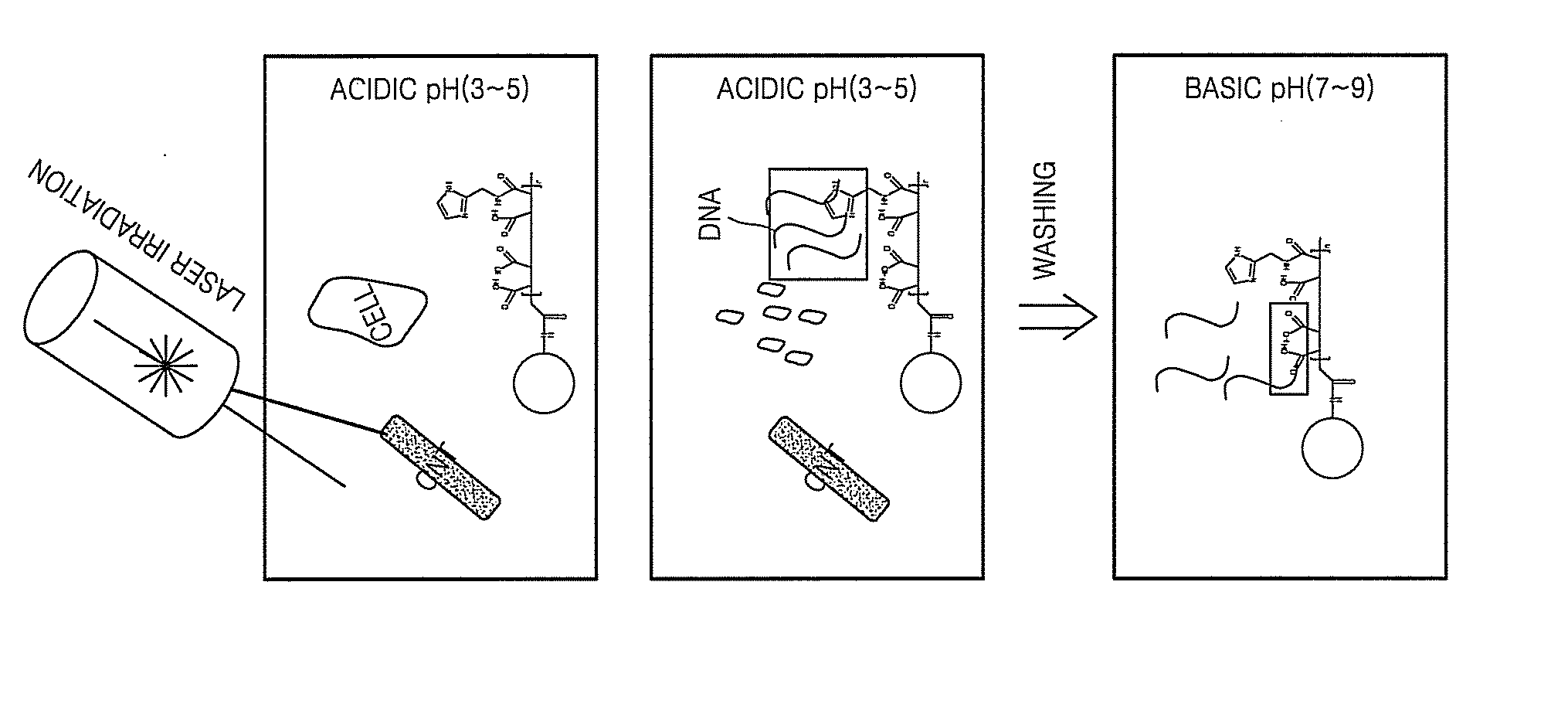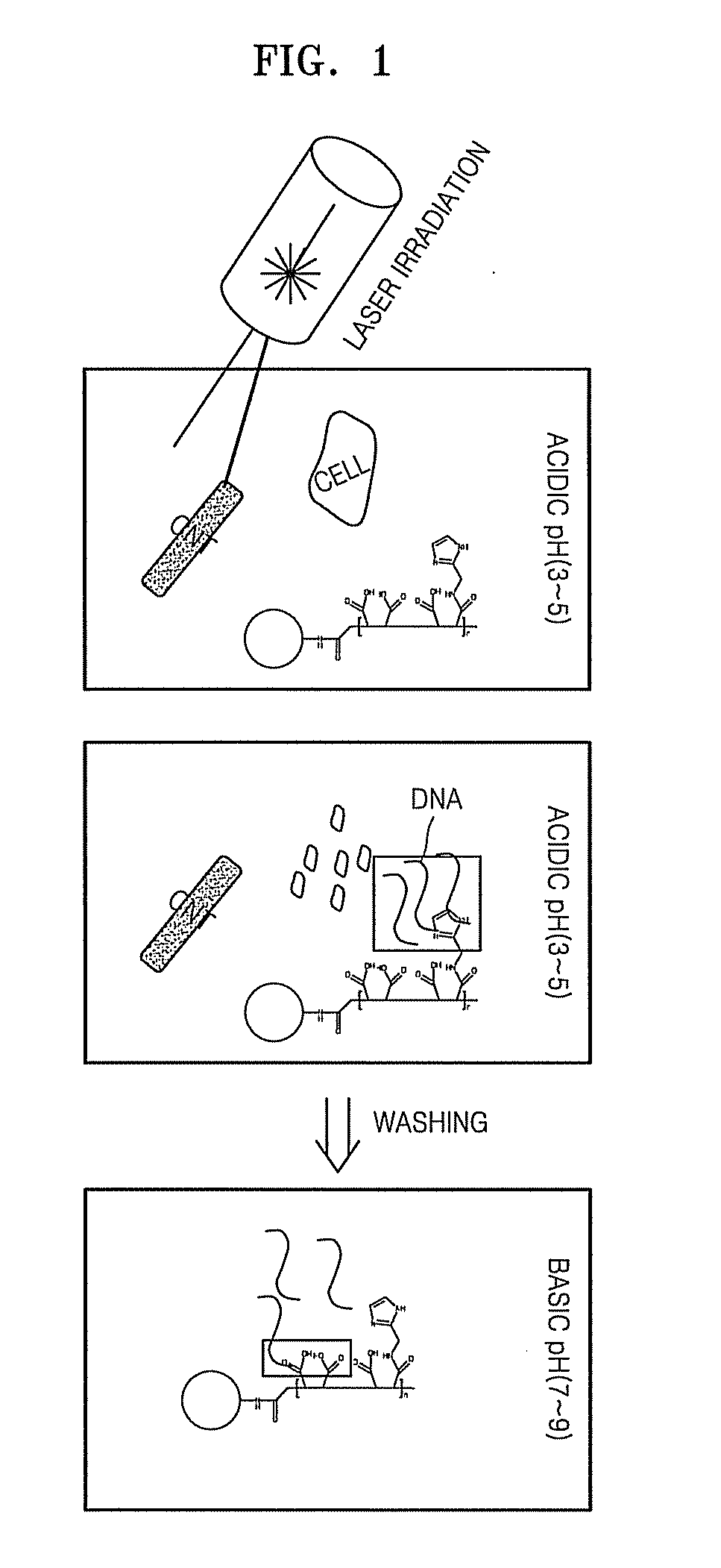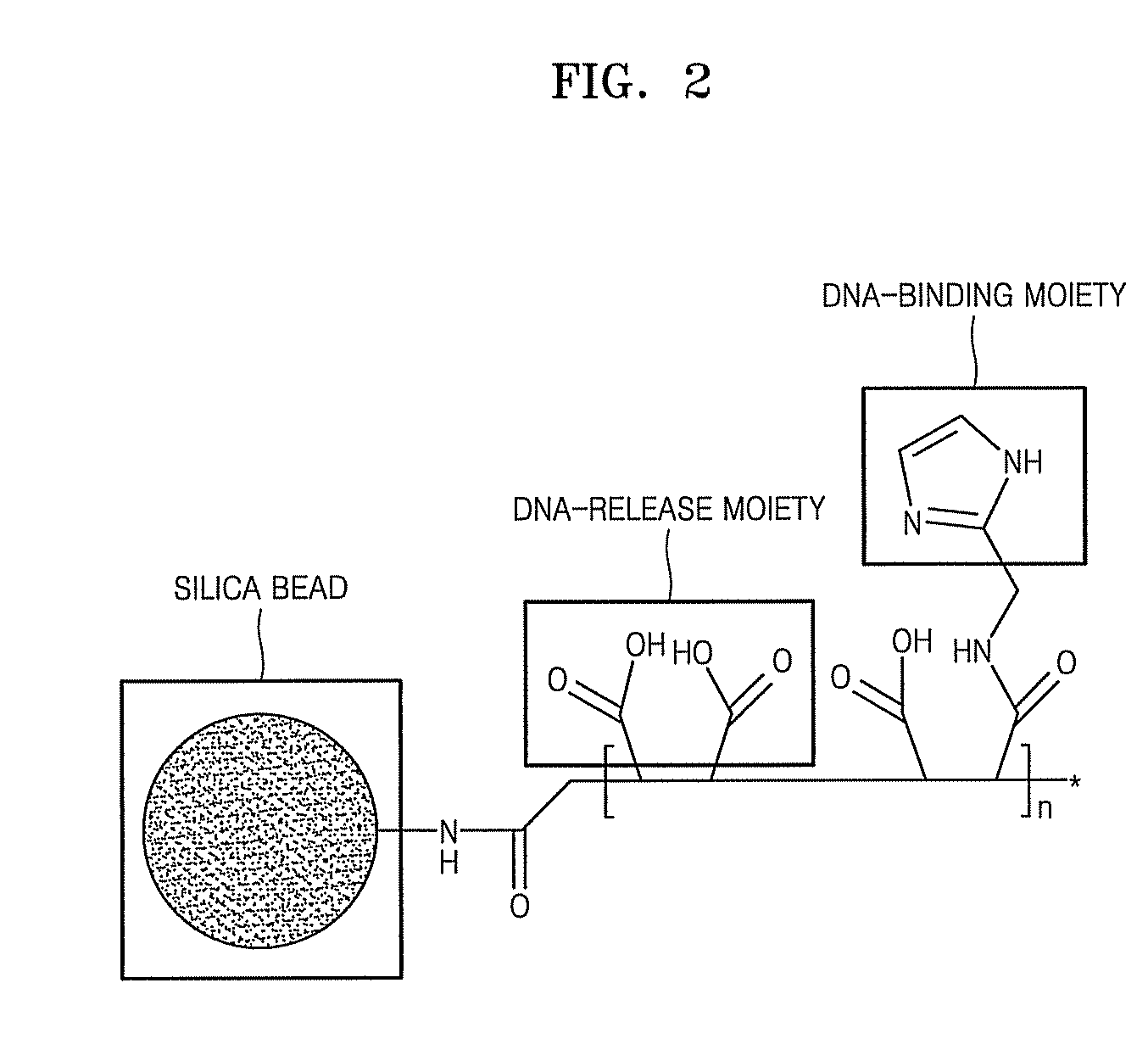Method and apparatus for isolating nucleic acids from a cell using carbon nanotubes and silica beads
- Summary
- Abstract
- Description
- Claims
- Application Information
AI Technical Summary
Benefits of technology
Problems solved by technology
Method used
Image
Examples
example 1
Synthesis of CNTs
[0060] In the current Example, bare CNTs and Pt-impregnated CNTs were synthesized. The bare CNTs were CE601B (available from CNI, U.S.A.), which were synthesized using a chemical vapor deposition (CVD) method and consisted of 1-3 CNT walls. The Pt-impregnated CNTs were synthesized as follows. 0.25 g of bare CNTs was added to 100 mL of distilled water and 80 mL of ethylene glycol and the mixture was subjected to an ultrasonic dispersion. Then, the resultant product was mixed with 20 mL of a solution of a Pt precursor, H2PtCl6, in ethylene glycol, and the mixture was refluxed at 110° C. to reduce the Pt precursor to nano-sized platinum. The Pt-impregnated CNTs were washed several times with distilled water using a centrifuge and dried using a freeze dryer.
[0061] The purity and shape of the bare CNTs and Pt-impregnated CNTs were examined using a transmission electron microscope (TEM) and an atomic force microscope (AFM). FIGS. 3 through 6 are photographic images illu...
example 2
The Effects of Laser Irradiation on Temperature
[0063] In the current example, the effect of laser irradiation on the temperature of a solution was examined. For this example, a laser of 11.7 A and 2 W irradiated 100 μl of each of a solution containing bare CNTs in distilled water; a solution containing Pt-impregnated CNTs in distilled water; and distilled water. FIG. 7 is a graph illustrating laser irradiation time vs. temperature of a solution. Referring to FIG. 7, it can be confirmed that the temperature of distilled water hardly increased following irradiation. For the solution containing bare CNTs and the solution containing Pt-impregnated CNTs the temperature increased to 80° C. or greater due to the laser irradiation for about one minute. Thus, it can be confirmed that CNTs are very useful for increasing the temperature of a solution by absorbing a laser beam, and thus cells can be efficiently disrupted using CNTs.
example 3
The Effects of Laser Irradiation and CNTs on Cell Disruption
[0064] The following example examined the effects of laser irradiation and CNTs on cell disruption. In particular, a sample solution containing E. coli strain BL21 and silica beads, together with the bare CNTs, or together with the Pt-impregnated CNTs described in Example 1, was subjected to laser irradiation. The solution was irradiated with a laser beam at a wavelength of 808 nm with a power of 2 W for 60 seconds. After the laser irradiation, E. coli cells were collected from the sample solution by centrifuging the irradiated cells at 5000 rpm for 2 minutes. The collected cells were then rinsed twice with 3 ml of a phosphate buffered saline (PBS) solution. The cells were then resuspended in phosphate buffered saline solution (PBS) (cell density; 1×105 cells / μl). Cell viability was then determined. The number of viable cells was determined by the ability of single cells to form colonies. Aliquots of E. coli cells (1×103) ...
PUM
 Login to View More
Login to View More Abstract
Description
Claims
Application Information
 Login to View More
Login to View More - R&D
- Intellectual Property
- Life Sciences
- Materials
- Tech Scout
- Unparalleled Data Quality
- Higher Quality Content
- 60% Fewer Hallucinations
Browse by: Latest US Patents, China's latest patents, Technical Efficacy Thesaurus, Application Domain, Technology Topic, Popular Technical Reports.
© 2025 PatSnap. All rights reserved.Legal|Privacy policy|Modern Slavery Act Transparency Statement|Sitemap|About US| Contact US: help@patsnap.com



